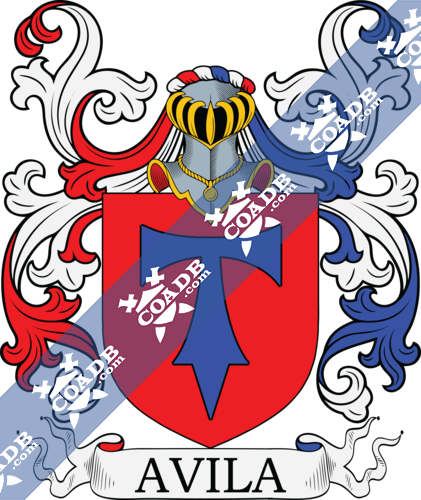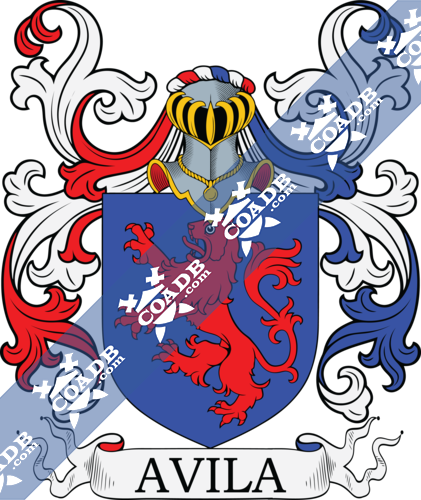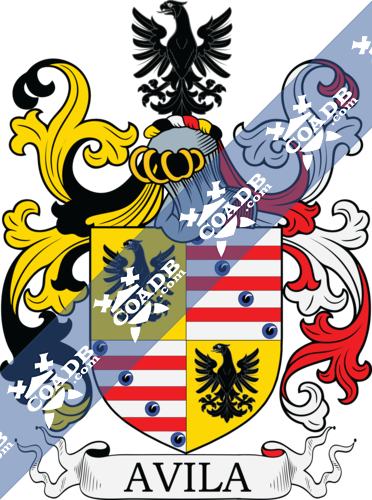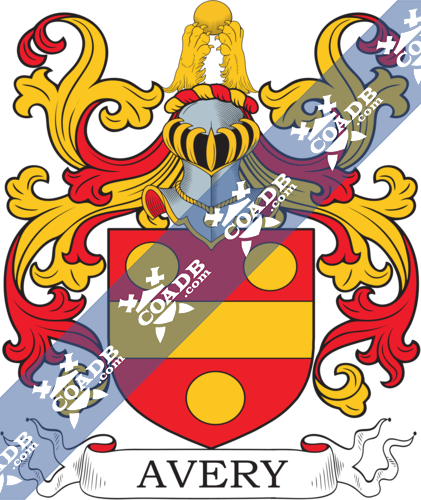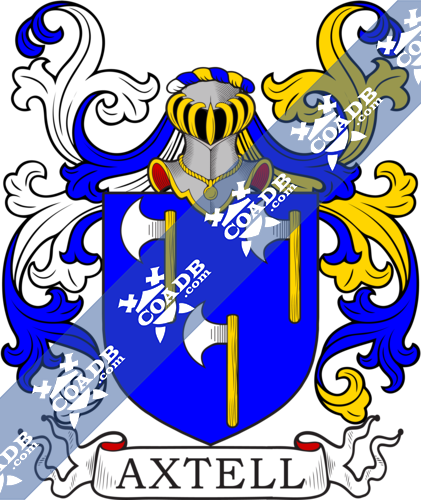Avila Family Crest, Coat of Arms and Name History

Avila Coat of Arms Gallery
Don’t know which Coat of Arms is yours?
We can do a genealogical research. Find out the exact history of your family!
Learn MoreSurname Meaning, Origin, and Etymology
Local surnames are one of the most ancient kinds of last names that were passed from father to children. They were very easy to use because they were based on the origin place of the bearer, which means that the surnames indicated from where the user comes from. In the Spain of the middle age, this was a very popular type of surname used by many people, and the last name Avila belongs to this category. This is because this surname was given to the people from the old city of Avila in Spain, which saw the birth of many noble families, which later took the name of the city as their last name.
Although the etymological origin of Avila is uncertain, some experts believe that it comes from the Germanic term “Apfel land” which can be translated into English as “land of apples”. This was a possible name given to this land by the Visigoths, the barbarian tribe that inhabited the Iberian region after the dissolution of the Roman Empire. During the middle age, this surname was also present in Portugal, where it comes from the word “Davila”, which means “from a town or a village”. The first record of this surname belongs to Diego Ávila who was made noble after he captured the King of France in the Battle of Pavia on April 22, 1528. Avila started in the kingdom of Castile and from there it extended to Extremadura, Andalucía, and Barcelona.
Spelling Variations
As any other European surname of medieval times, Avila count on several spelling variations. During this period of history, it wasn’t rare to see variations of a name thanks to many factors like the mixing and evolution of languages and the wrong translation of surnames. There was also the fact that medieval scribes used to write words according to how they heard them, so every one of them could write them differently. Another factor was, that some families added suffixes or prefixes to the surnames to distinguish their branch from another of the same last name or to show a political position, there were cases in which they do it just to add a poetic sense to the last name. Some of the most common spelling variations for Avila in Spanish were: de Avila, Avilés, Aviles, Dávila, Davila and Dávilla. In Spanish, the presence or absence of the accent mark can indicate that we are seeing two different words, for that reason Dávila and Davila are taken as two variations.
Avila has also spelling variations in Portuguese like D’Avilla, Da Villa, D’Avila, Devilla, Davilla, De Villa, Avilla and Villa.
Popularity & Geographic Distribution
Avila is not a surname that had the same high popularity that other Spanish surnames do. According to the census of 2014 Avila is the 560th most common surname in the words with approximately just 911,444 bearers. It is most prevalent in Mexico and its highest density is in Honduras. The second nation with the highest amount of Avila is Colombia, followed by Brazil in third place.
Early Bearers of the Surname
There are good records of some old bearers of Avila or of its spelling variations such as Gil Gonzalez de Avila (1570-1658) who was an important biographer and antiquary from Spain, Luis de Avila y Zuñiga an historian and diplomatic under the orders of King Carlos V in the 16th century, Hernando Avila a Spanish artist from the 16th century, Enrique Guzmán Dávila who became the Marquis of Povar on February 16, 1612 and Bartolomé Benito Davila who was made Count by Carlos II in Spain.
History, Genealogy, and Ancestry
A good record of the genealogy of an Avila family belongs to José de Avila who was born in Lima, Peru in 1728, had a good career as a military man and got married to Rosa Villavicencio. They have six children, first there was Dionisia de Avila y Villavicencio who got married to Ventura Velázquez, then there was Juan Angel de Avila y Villavicencio who was born in 1760 and got married to Clara Risco and their children were Elena de Avila, Edmundo de Avila, Rosa de Avila and Julio César de Avila.
The third child of José de Avila was Agustin de Avila y Villavicencio who was born in 1772 and got married to Carmen Rojas y Sosa and their children were Felipa de Avila Rojas, María Antonia de Avila Rojas, Dolores de Avila Rojas and Andrea de Avila Rojas. The fourth child was Lorenzo de Avila y Villavicencio who was born in 1774 in Valdivia, Chile and got married to Francisca González Castro y Brito and their children were Juana María de Avila y González, Tomasa de Avila y González, Isidro Gaspar de Avila y González, Miguel de Avila y González, Pedro de Avila y González, Diego de Avila y González, José María de Avila y González, Rosario de Avila y González, Felipa de Avila y González and María Hermenegilda de Avila y González.
The other two children of José de Avila were María del Carmen de Avila y Villavicencio who was born in 1783 and got married to Leandro Uribe y Asenjo and Juana Crisóstoma de Avila y Villavicencio.
Early American and New World Settlers
Some of the first bearers of Avila in arriving in America were: Cristóbal de Avila who arrived in 1513, Toribio de Avila who arrived in 1514, Francisco de Avila who landed in New Spain in 1515, Miguel de Avila who arrived in America in 1526 and Alonso de Avila who arrived in Cartagena in 1534.
Mottoes
We were unable to locate any documented mottoes for the Avila family.
Grantees
We were unable to locate any documented grantees for the Avila family.
Notables
Some remarkable users of the surname Avila are John Avila an American-Mexican bassist player for the band Oingo Boingo, Alberto Villalta Ávila (b.1947) a former football player from El Salvador, Alexander Thomas Avila (b. 1987) an American Major League Baseball player, Ramón Patricio Ávila Castro (b. 1982) a football player from Chile, Yiye Ávila (1925-2013) a Puerto-Rican evangelist and Rodrigo Avila (b. 1964) a politician from El Salvador.
Blazons & Genealogy Notes
1) Espagne, Rome – (Revista del Col. araldico 1907) – D’or à l’aigle de sable tenant de sa patte senestre une palme de sinople brochant en bande sur son estomac. English: Or an eagle sable holding in the sinister talon a palm frond vert covering in bend the stomach.
2) Portugal – Écartelé aux 1 et 4 d’or à l’aigle de sable le vol éployé aux 2 et 3 d’argent à trois fasces de gueules acc de quatre yeux ombrés d’azur rangés en bande Cimier l’aigle de l’écu. English: Quarterly 1st & 4th or an eagle sable wings displayed 2nd & 3rd argent three bars gules surrounded by four eyes pupils azure arranged in bend Crest: the eagle of the shield.
3) Espagne – De gueules à un tau au pied fiché d’azur. English: Gules a tau cross fitchy at the foot azure.
4) Castille – D’azur au lion de gueules. English: Azure a lion gules.
5) Espagne – D’azur à l’aigle d’or couronnée du même tenant un compas ouvert d’argent adextrée en chef d’une épée d’argent garnie d’or soutenant une couronne royale du même l’aigle ch sur sa poitrine d’un écusson aux armes d’ qui sont d’azur à treize besants d’or 3 3 3 3 et 1. English: Azure an eagle or crowned of the same holding an open compass argent to the dexter in chief a sword argent hilt and pommell or supported by a royal crown of the same, the eagle charged on in the sinister breast an escutcheon (of arms, which are) azure 13 bezants or 3,3,3,3 and 1.

